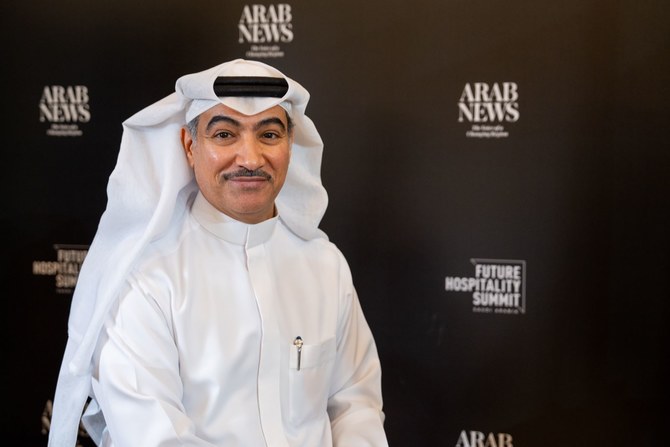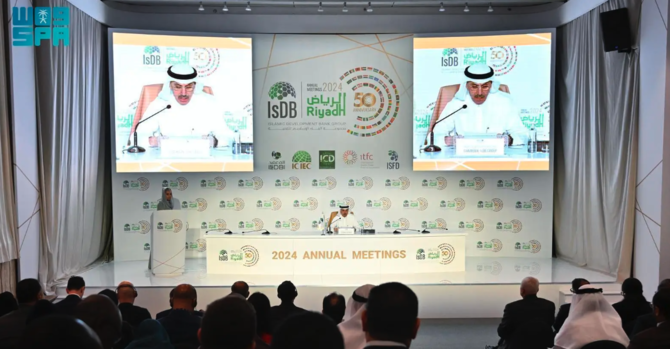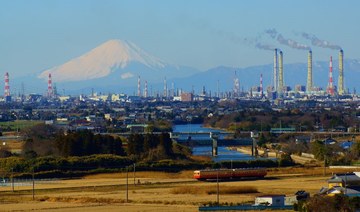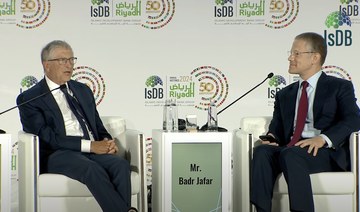LONDON: Royal Dutch Shell’s investment in a carbon capture plant at its tar sands facility in Alberta shows the company recognizes the threat of climate policies targeting unconventional oil.
The project will help shield Shell against future penalties on tar sands, as planned by California and the European Union, while its commercial success will also depend on demand for the CCS technology which it develops.
In other words, the investment shifts Shell toward the environmental groups which have opposed tar sands development and coal-fired power, on the basis of their CO2 emissions, and could encourage policymakers on CO2 limits.
CCS traps CO2 from processing and burning fossil fuels but has been slow to progress because of vast costs and a failure by governments to charge for emissions whether through carbon taxes or emissions trading schemes.
The first commercial scale power plant application is under construction at the Boundary Dam coal-fired power plant in Saskatchewan, Canada, while Shell’s Quest project will be the first to apply to unconventional oil.
The Quest plant will trap carbon dioxide from Shell’s tar sands upgrader at its Scotford facility in Alberta and inject the greenhouse gas into porous rock 2 km below ground.
Regional and federal Canadian governments will supply C$ 865 million ($ 881 million) toward an estimated cost of C$ 1.35 billion. Shell’s investment, confirmed last week, is undisclosed.
The project will also get two tradable carbon offsets for every ton of avoided CO2 emissions, currently worth up to C$ 15 each, implying up to C$30 million annually if the project meets its minimum target of 1.08 million tons sequestered per year by December 2015.
Production of liquid fuels from tar sands is generally more carbon-intensive than conventional petroleum because of the higher energy intensity of extraction and upgrading.
Tar sands are made of a mixture, in varying proportions, of sand and other mineral matter (80-85 percent) water (5-10 percent) and bitumen (10-18 percent).
The bitumen is either extracted after mining from the surface, as in Shell’s case, or else extracted in situ underground.
In the case of surface mining, the bitumen and sand is removed using massive hydraulic shovels and transported to processing facilities where it is mixed with hot water, screened and the bitumen separated out.
Raw bitumen will not flow through a pipeline at ambient temperatures and so it is either upgraded to synthetic crude oil (SCO) or diluted with a light hydrocarbon.
Shell upgrades the bitumen at its Scotford facility in a process which removes contaminants and adds hydrogen produced from natural gas.
Such hydrogen production reacts steam with natural gas at high temperatures, separating methane into hydrogen and CO2 which Shell will capture using an amine solvent to absorb the greenhouse gas, under its Quest CCS project.
Shell estimates the project will capture up to 35 percent of the total CO2 emissions from the upgrader.
Shell’s investment makes sense in the context of greater expected curbs on CO2 in Canada.
Canada has a national target to cut its emissions by 17 percent by 2020 compared with 2005 levels.
BP energy data show the country’s CO2 emissions from burning fossil fuels presently are just 3.4 percent below 2005 levels and grew annually for the past two years, implying that the target will require additional action to curb CO2 from its expanding tar sands industry.
Canadian provinces have imposed additional targets.
Under 2007 regulation energy companies in Alberta have to report their CO2 emissions per barrel of oil (carbon intensity) and cut these by 12 percent annually, with a phase-in of several years for emitters established after 2000.
That carbon intensity approach puts no upper limit on absolute emissions, and is made more flexible by allowing companies instead to pay into a climate fund at the rate of C$ 15 per ton of exceeded CO2, or else buy carbon offsets from Alberta-based projects which reduce their emissions below a business as usual baseline.
But Alberta is reportedly planning to tighten that target, as it expects CCS to account for 70 percent of the province’s carbon savings through 2050.
The Shell investment also makes sense in the context of expected rising demand for CCS technology, to curb emissions from coal-fired power plants.
Ottawa confirmed on Wednesday a limit on CO2 emissions from new coal plants, following similar caps in Britain and the United States, and which will force the use of CCS in new coal-fired power generation.
Perhaps the most significant prospective policy threat to unabated tar sand emissions will come from plans in California and the European Union to take account of their higher CO2 under existing low carbon fuel standards, and which could provide wider templates.
The EU’s executive Commission in February delayed until next year a decision on whether to attribute higher CO2 emissions to tar sands under its Fuel Quality Directive (FQD).
The law already requires fuel suppliers to cut the life-cycle CO2 emissions of their fuels by 6 percent per barrel by 2020 compared with 2010 levels.
The commission has proposed to label tar sands CO2 emissions as 22 percent above the average crude baseline, in a move which would discourage refiners from using it under the FQD target.
The proposal ascribes to tar sands a value of 107 grams CO2 per megajoule of fuel, compared with average crude oil at 87.5 grams.
It remains to be seen whether Shell’s Quest investment will now see the company support such deliberate targeting of tar sand CO2, policies it has previously been coy about.
The author is a Reuters market analyst. The views expressed are his own.
— The author is a Reuters market analyst. The views expressed are his own.
Shell’s carbon capture plant bets on emissions targets
Shell’s carbon capture plant bets on emissions targets
Saudi banks’ funding profile changing on rising mortgage demand: S&P Global

RIYADH: Saudi banks are expected to pursue alternative funding strategies to deal with the rapid expansion in lending, fueled by the demand for new mortgages, according to S&P Global.
In its latest report, the credit-rating agency stated that the funding profiles of financial institutions in the Kingdom are set to undergo changes, primarily driven by a state-backed initiative to boost home ownership.
According to the analysis, mortgage financing represented 23.5 percent of Saudi banks’ total credit allocation at the end of 2023, compared to 12.8 percent in 2019.
“The ongoing financing needs of the Vision 2030 economic initiative and relatively sluggish deposits growth, is likely to incentivize banks to seek alternative sources of funding, including external funding,” said S&P Global.
The report also predicted that this pursuit of external funding could potentially impact the credit quality of Saudi Arabia’s banking sector.
According to the US-based rating agency, lending growth among Saudi banks has outpaced deposits, with the loan-to-deposit ratio exceeding 100 percent in 2022, up from 86 percent at the end of 2019.
S&P Global expects this trend to persist, particularly with corporate lending playing a more significant role in growth over the next few years. “We consider Saudi banks are likely to turn to alternative funding strategies to fund that expansion,” the report said.
It added: “We consider, however, that the risk created by the maturity mismatch is mitigated by the relative stability of Saudi deposits.”
The agency also predicted that Saudi banks’ foreign liabilities will continue to increase, rising from about $19.2 billion at the end of 2023 to meet the funding requirements of strong lending growth, particularly amidst lower deposit expansion.
The report highlighted that Saudi banks have already tapped international capital markets, and the credit rating agency expects this trend to continue for the next three to five years.
According to S&P Global, the Saudi banking system could transition from a net external asset position of SR42.9 billion, or 1.6 percent of lending, at the end of 2023 to a net external debt position within a few years.
In April, S&P Global, in another report, stated that banks in the Kingdom are anticipated to experience robust credit growth ranging between 8 to 9 percent in 2024.
The agency noted that this credit expansion will be propelled by corporate lending, fueled by increased economic activities driven by the Vision 2030 program.
Moreover, the report added that the Saudi government and its related entities are expected to inject deposits into the banking system, thereby supporting the credit growth of financial institutions in the Kingdom.
PIF’s tourism investment arm Asfar to develop the city of Hail as next destination, CEO reveals

RIYADH: Saudi Arabia’s northwestern city of Hail will be the fifth destination development of Saudi Tourism Investment Co., the firm’s CEO has revealed.
Speaking to Arab News on the sidelines of the Future Hospitality Summit, Fahad bin Mushayt announced the plan, which comes after the activation of the company’s projects in Al-Baha, Yanbu, Al-Ahsa, and Taif.
The projects have all been launched within one year of the Public Investment Fund-owned firm – also known as Asfar – being unveiled.
The company is mandated to invest in new projects and develop attractive travel destinations, incorporating hospitality, tourist attractions, retail, and food and beverage offerings in cities across Saudi Arabia.
Bin Mushayt said: “In almost one year, Asfar is already playing in four destinations, with Hail coming soon, so I can reveal that.”
The entity is working to bridge the gap between the public and the private sector, as well as the local community, to create unique experiences that abide by the DNA of both the nation and the cities themselves, the executive noted.
This notion came to life during the summit, where the company signed a number of agreements with hospitality developers to launch four asset classes in the city of Yanbu.
Among them, Asfar announced the signing of investment agreements with Baheej, a joint venture between the company and the Tamimi-AWN alliance, as well as the Royal Commission for Yanbu.
“This morning, we announced our partnership with Curtain Hospitality, and they are going to be the operator of our resort in Yanbu, under the brand called Cloud 7. So the structure usually involves us and the developer as an investor, and they bring the know-how to build real estate and hospitality,” he said during the second day of the event.
The concept of Yanbu as Saudi Arabia’s most up-and-coming “second-tier city” was not limited to Asfar’s CEO alone.
Speaking on a panel at the summit alongside Mushayt, Abdulrahman Al-Bassam, a board member of Baheej, further emphasized these ideas, stating: “Yanbu is going to be the gateway of the new Red Sea Riviera, with four different asset classes expected to be operational by 2027.”
Adhering to its mandate, Asfar selects a different private sector partner to develop each of their destinations, the CEO explained, saying: “We are here to empower the private sector, to encourage them, to encourage them to go and invest with us. And we give them a lot of incentives.”
He acknowledged that those companies put their money into the subsidiary. However, Mushayt emphasized that they provide “a lot of incentives” as a semi-government entity empowered by PIF, the Ministry of Tourism, and the Ministry of Investment.
The PIF subsidiary utilizes a mix of domestic and foreign investments to empower its initiatives, focusing on operators that are suitable for the needs of the project, Mushayt said.
“The operator, if it’s a hotel operator, we bring a hotel operator; if it’s an adventure park operator, we bring a theme park. In fact, we have a theme park now, and we’re talking to international operators,” he said.
The Asfar CEO further revealed that they have a resort in Yanbu that would require cruises, “so we’re talking to Cruise Saudi, and we’re talking to another international player.”
He added: “It’s a mix of foreign and local operators, investors, and our hospitality management companies.”
HR development fund helps another 74k Saudis get private sector jobs, figures show

RIYADH: Almost 74,000 Saudi nationals received help securing private sector jobs in the first quarter of 2024 by the Kingdom’s Human Resources Development Fund.
The body supported the hiring of 73,878 citizens over the period, as offering advising, training, and empowerment services to more than 1.1 million individuals.
Additionally, during the same period, the organization provided services to more than 72,000 private sector firms across various industries throughout the Kingdom. Approximately 88 percent of these establishments were small and medium-sized businesses.
Saudi imports, exports increase despite regional tensions

RIYADH: Saudi Arabia’s imports and exports increased 5 percent in the first quarter of 2024 despite the tension in the region, according to a senior official.
In November 2023, the Saudi Ports Authority, known as Mawani, announced a 5.31 percent increase in container handling across all seaports in October. A total of 741,905 twenty-foot equivalent units were processed, compared to 704,486 a year before.
In an interview with Al-Ekhbariya TV channel on the sidelines of the Logistic Integration Forum 2024, held on April 29 in the Eastern Province, Minister of Transport and Logistic Services Saleh Al-Jasser noted that this growth stemmed from collaborative efforts between the public and private sectors.
IsDB Group annual meetings conclude with 85 agreements worth over $8bn

RIYADH: As many as 85 agreements worth over $8 billion were signed across diverse sectors during the recently concluded annual meetings of the Islamic Development Bank Group.
This stands in contrast to the last year’s meetings, which recorded only 77 financing agreements, totaling $5.4 billion.
Speaking at the concluding press briefing, IsDB Chairman Mohammed bin Sulaiman Al-Jasser disclosed the signing of financing agreements between the group's institutions, 38 member countries, and 22 international financial institutions, covering diverse projects.
He lauded the continuous backing of the group by Saudi leadership, citing it as a testament to the Kingdom’s commitment to global cooperation and advancement.
Highlighting the significance of this year’s gatherings, the chairman mentioned that they included meetings of the IsDB Group’s councils and over 27 consequential side events.
These sessions brought together distinguished intellectuals, experts, and researchers from various developmental domains, with a total of more than 3,750 participants.
Notably, representatives from approximately 55 international and regional partner organizations, including 23 institutional heads, were present.
Detailing the Private Sector Forum’s activities, Al-Jasser noted the participation of over 1,500 delegates from more than 60 nations. The forum, comprising 17 events, facilitated the signing of over 60 agreements amounting to approximately $6.5 billion.
Over the past 50 years, the IsDB has played a significant role in progress by funding developmental projects exceeding a total value of $182 billion, according to the chairman.
These projects have encompassed diverse vital areas, ranging from basic infrastructure and agriculture to various strategic sectors such as health, education and energy, as well as trade, and Islamic finance.
He emphasized that the discussions and exchanges during the meetings provided valuable insights and success stories crucial for fostering sustainable social and economic development. He affirmed that the outcomes would transform the IsDB’s future initiatives and strategic partnerships.
The issuance of the “Golden Jubilee Declaration” by the IsDB Board of Governors, acknowledging the bank’s pivotal role and achievements, was also highlighted by Al-Jasser.
The declaration outlined key future priorities, including enhancing governance, expanding concessional financing, and advancing Islamic finance and cooperation in Southern countries.
In conclusion, Al-Jasser reiterated the theme of the annual meetings – “Cherishing our Past, charting our Future: Originality, Solidarity and Prosperity” – underscoring its significance as a guiding principle for the IsDB’s trajectory.
He emphasized the organization’s commitment to drawing inspiration from past achievements, learning from historical lessons, and leveraging current challenges and opportunities to forge a brighter future.
Last year, the IsDB Group announced several projects with 24 member countries aimed at addressing pressing challenges hindering growth in the Global South, with a focus on health, agriculture, and food security, as well as initiatives targeting small and medium enterprises, education, and humanitarian assistance, among others.















